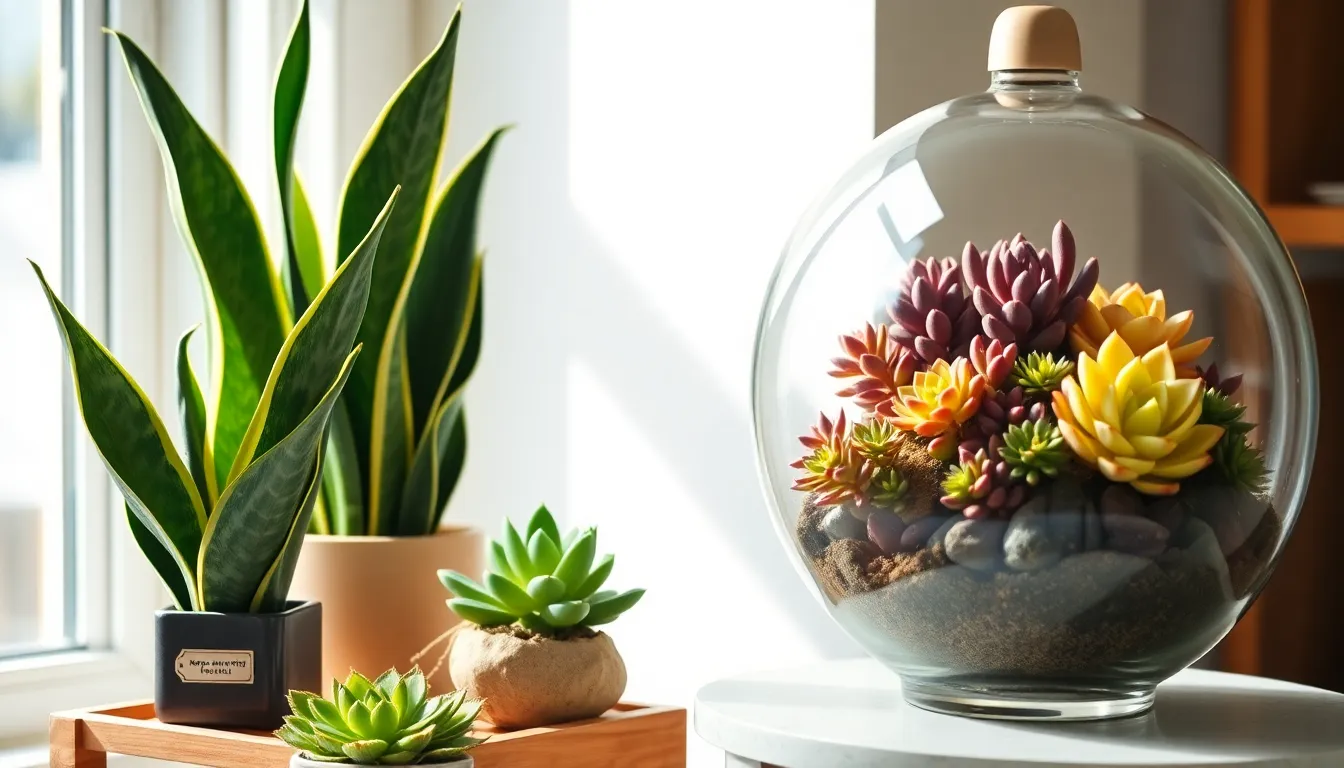Winter can be a challenging season for houseplant enthusiasts, but it also presents a unique opportunity to deepen your connection with your indoor greenery. As the daylight hours shorten and temperatures drop, even the hardiest of houseplants need a little extra care to thrive. Whether you’re a novice gardener looking to keep your first pothos alive or a seasoned plant parent with a lush indoor jungle, understanding the specific needs of your plants during winter is crucial to their health and vitality.
In this article, we’ll explore the intricacies of winter houseplant care, providing you with the knowledge to nurture your plants through the colder months. You’ll learn how to adapt your watering routine, adjust lighting conditions, and manage indoor humidity to create a cozy environment for your leafy companions. By the end of this guide, you’ll feel equipped and confident, ready to turn your home into a sanctuary where your houseplants can flourish year-round. So, let’s embark on this journey to ensure your indoor garden remains a vibrant haven, even when the world outside is blanketed in frost.
Adjust Watering Frequency Appropriately
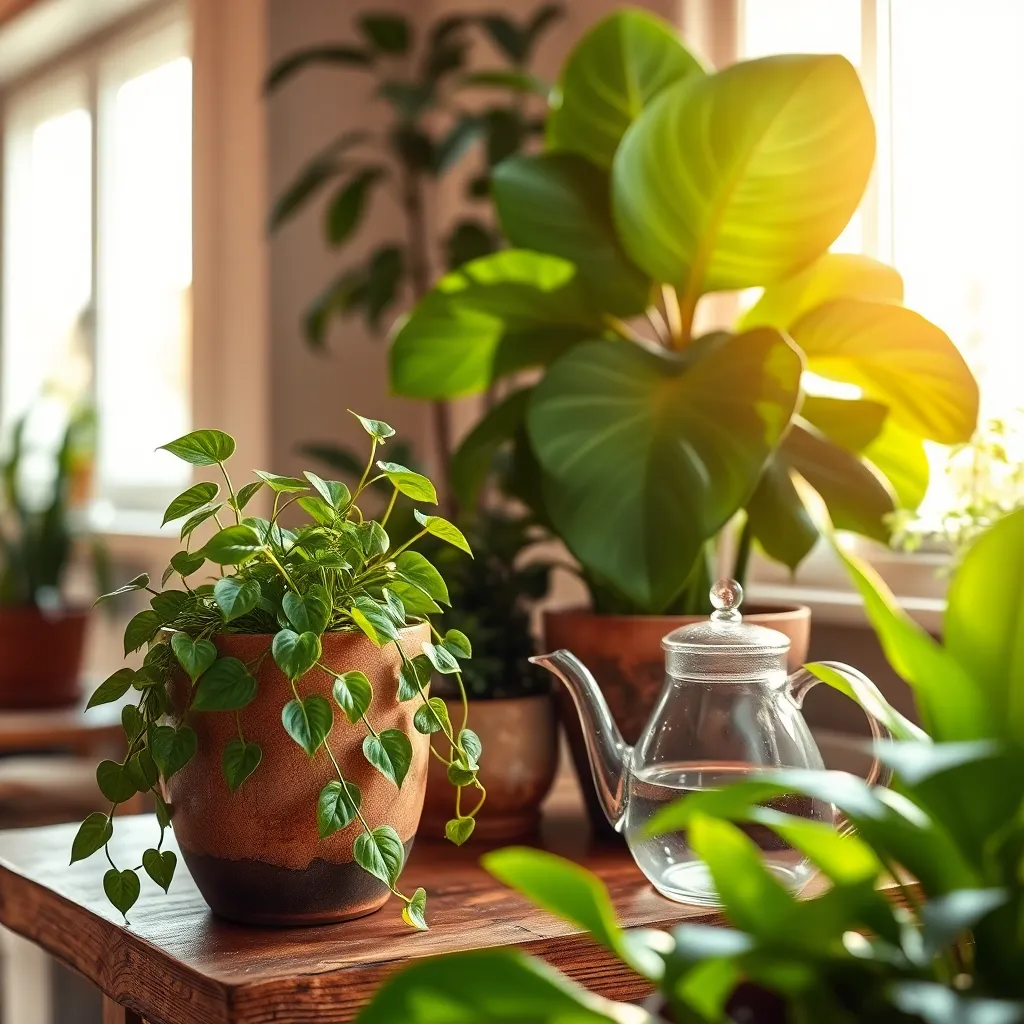
In winter, it’s crucial to adjust your watering frequency to match your houseplants’ slower growth rate. Most plants require less water during this season because they are not actively growing and the cooler temperatures reduce evaporation.
Begin by checking the soil moisture before reaching for your watering can. Use your finger to feel the soil about an inch deep; if it feels dry, it’s time to water, but if it’s still moist, hold off for a few more days.
For those with more experience, consider using a moisture meter to gain a more precise understanding of your plants’ needs. This tool can help you avoid overwatering, which is a common mistake during winter when plants are more susceptible to root rot.
Additionally, ensure your pots have adequate drainage to prevent water from pooling at the bottom. Clay pots can be particularly beneficial as they are porous and allow excess moisture to evaporate more easily.
Ensure Optimal Light Exposure

During winter, houseplants can struggle with insufficient light, as days are shorter and the sun is less intense. To help your plants thrive, it’s essential to maximize their exposure to natural light by placing them near south- or west-facing windows, which usually receive the most sunlight.
If natural light is limited, consider investing in full-spectrum LED grow lights to supplement your plants’ needs. These lights mimic the sun’s spectrum and can be placed above your plants to ensure they receive adequate light for photosynthesis.
To ensure even growth, rotate your plants every couple of weeks so all sides receive light exposure. This simple step can prevent your plants from becoming lopsided and help them develop uniformly.
Be mindful of the distance between your plants and any artificial light sources. Ideally, keep plants about 6 to 12 inches away from grow lights to avoid overheating or causing leaf burn.
Maintain Stable Indoor Temperatures
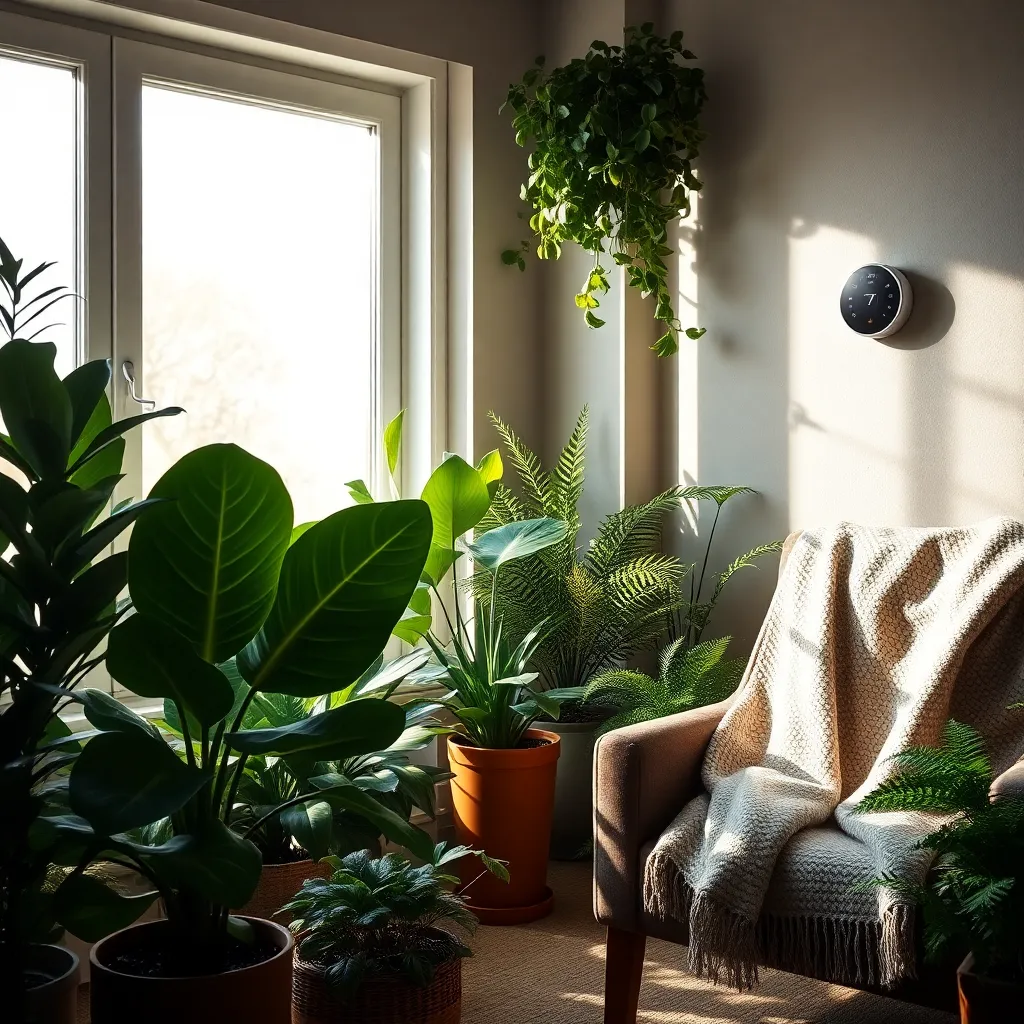
Maintaining stable indoor temperatures is crucial for the well-being of your houseplants during winter. Rapid temperature changes can stress plants, leading to wilting or leaf drop.
Positioning your plants away from drafty windows and doors can help maintain a consistent environment. Additionally, avoid placing them near heat sources such as radiators or fireplaces that can cause sudden increases in temperature.
To ensure even indoor temperatures, consider using a room thermometer to monitor conditions. Aim to keep the temperature between 65°F and 75°F during the day, and not lower than 55°F at night.
For advanced care, use a space heater with a thermostat in rooms where temperature control is difficult. A small fan can also help circulate air, reducing the risk of cold spots near windows.
Increase Humidity Levels Effectively
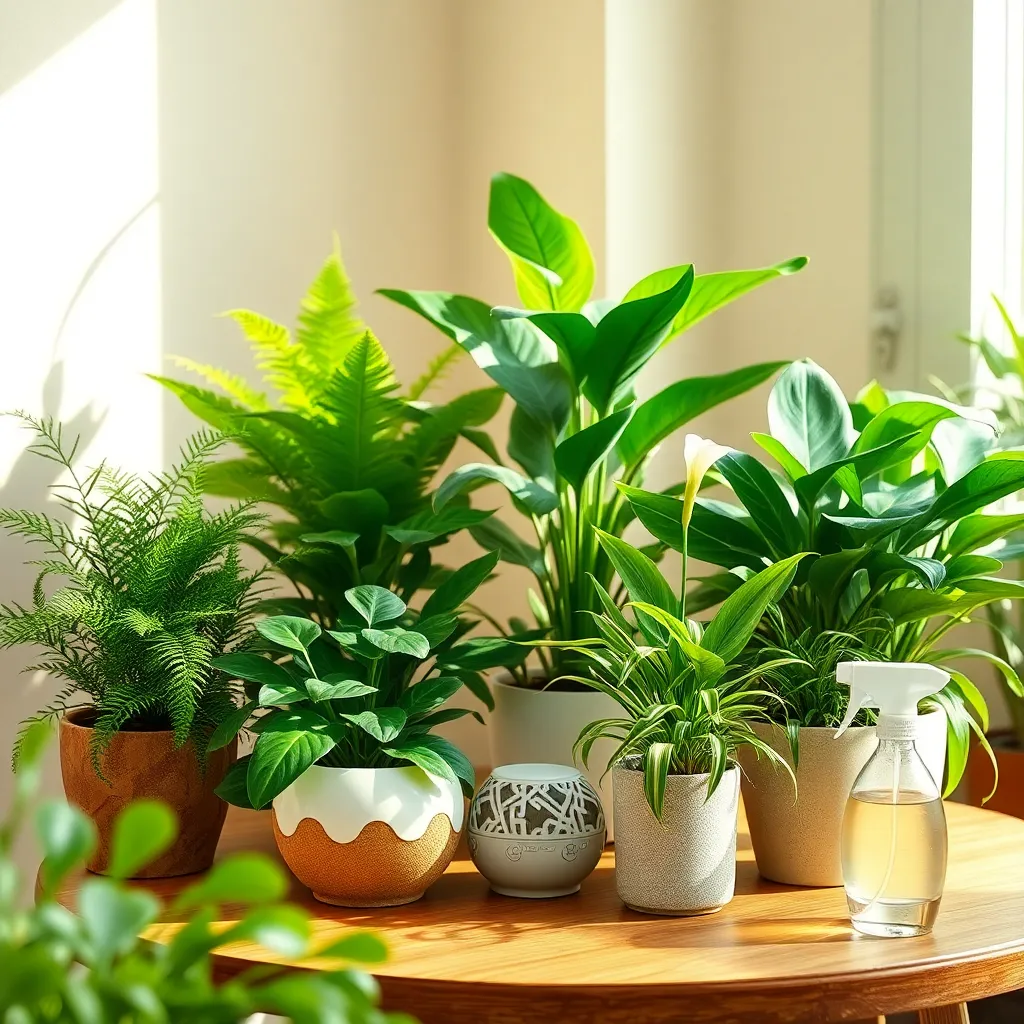
During winter, indoor heating can significantly reduce humidity levels, which can adversely affect your houseplants. To combat this, consider using a humidifier to maintain a consistent and adequate humidity level around your plants.
Alternatively, placing plants on a tray filled with water and pebbles can also help increase humidity naturally. Ensure the pots are resting on the pebbles and not directly in the water to prevent root rot.
Grouping plants together is another effective strategy, as they can create a microenvironment with elevated humidity through their natural transpiration process. Additionally, placing bowls of water near radiators can gently humidify the air as the water evaporates.
For a quick boost, misting your plants with water can be beneficial, but it’s important to do this in the morning to allow leaves to dry before nighttime. Keep in mind that some plants, like succulents and cacti, prefer drier conditions even in winter, so adjust your care accordingly.
Inspect for Pests and Diseases
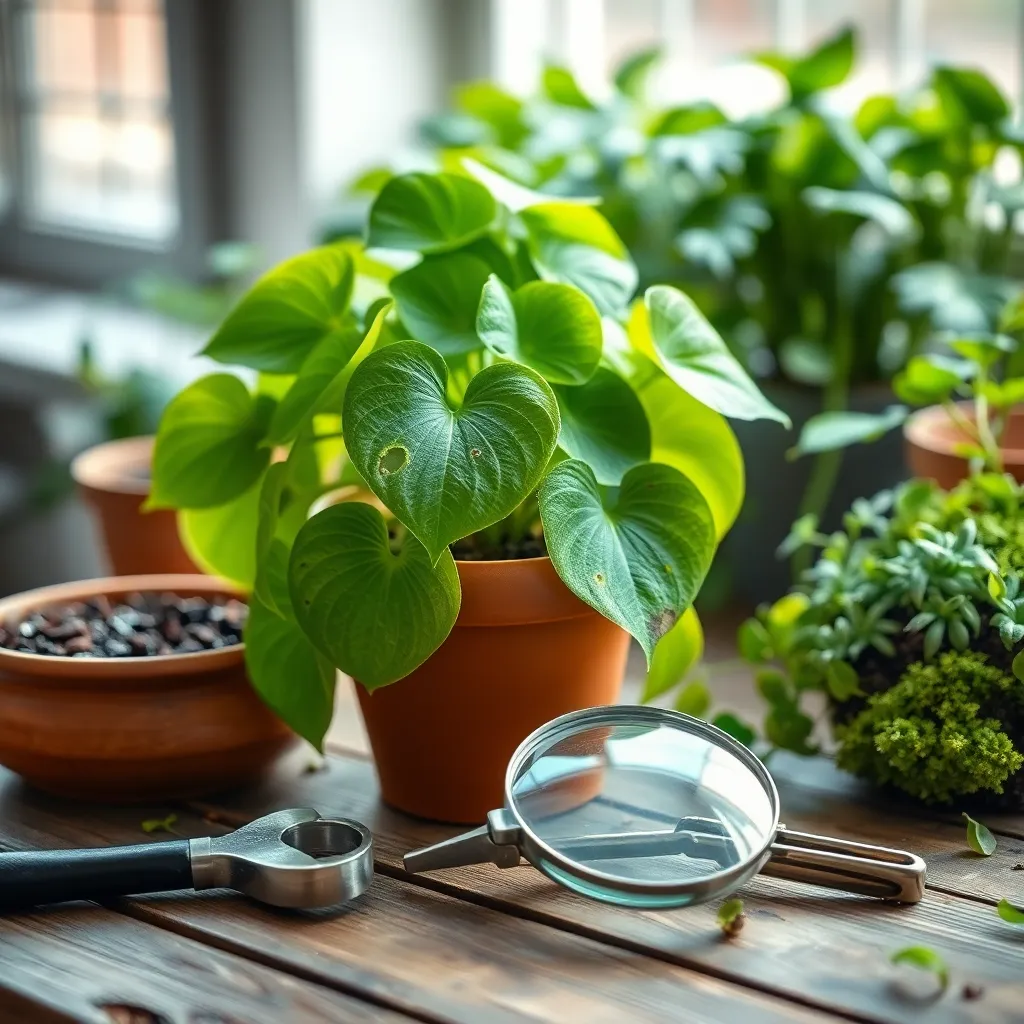
Checking your houseplants for pests and diseases is crucial during the winter months, as indoor conditions can often encourage their growth. Start by inspecting the leaves, stems, and soil surface regularly for any signs of trouble such as discoloration, spots, or webbing.
Look under the leaves and in the crevices where pests like spider mites and aphids tend to hide. A magnifying glass can be helpful for spotting these tiny invaders early, allowing you to take swift action before they spread.
For beginners, consider using a simple homemade insecticidal soap by mixing one tablespoon of dish soap with two cups of water to spray on affected areas. This solution is often effective against soft-bodied insects and provides an eco-friendly first step in pest management.
Experienced gardeners might explore more advanced techniques like introducing beneficial insects such as ladybugs or predatory mites into their indoor garden. These natural predators can help keep pest populations in check, providing a sustainable method of control.
Conclusion: Growing Success with These Plants
As winter’s chill envelops your home, nurturing your houseplants becomes a nurturing act for your relationships as well. The five key concepts we explored—adjusting water schedules, ensuring adequate light, maintaining humidity, watching for pests, and choosing the right plants—mirror the care and attention needed in our relationships. Just as plants require careful monitoring of their environment, so do our connections with loved ones. Start today by assessing your plant’s needs, and consider how you might apply this thoughtful attentiveness to the people in your life.
Take action now: Choose one plant to care for differently this week, and let it remind you to engage more deeply with someone close to you. As you tend to your greenery, think about nurturing your relationships with the same dedication.
Remember, just like a flourishing plant, a thriving relationship requires continuous effort and adaptability. Bookmark this article for future reference; it is a guide to both botanical and relational success. Let this winter be the season where your relationships grow as robustly as your houseplants, setting the stage for a vibrant future. You’re equipped to cultivate not just plants, but meaningful connections that stand the test of time.

